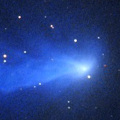
|
Now it is 11.0 mag (Mar. 5, Maik Meyer). It stays bright as 11 mag for a long time. In the Southern Hemisphere, it will be unobservable soon. In the Northern Hemispehre, it stays observable for a long time until the comet fades out. But it will be getting lower gradually after this.
Date(TT) R.A. (2000) Decl. Delta r Elong. m1 Best Time(A, h)
Mar. 10 4 7.94 32 25.6 2.718 2.681 77 10.8 19:51 (144, 11)
Mar. 17 4 13.53 34 2.4 2.798 2.664 72 10.8 19:40 (143, 8)
|
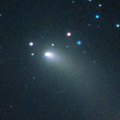
|
It brightened up to 9-10 mag from December to February. Juan Jose Gonzalez reported that it was bright as 9.3 mag on Feb. 21. However, Didac Mesa Romeu reported the condensation got weaker on Feb. 22. In the Northern Hemisphere, it stays extremely low after this. In the Southern Hemisphere, it will appear in the morning sky soon. Then it stays observable in good condition.
Date(TT) R.A. (2000) Decl. Delta r Elong. m1 Best Time(A, h)
Mar. 10 21 37.81 3 54.2 1.404 0.684 26 11.3 4:28 (267, -2)
Mar. 17 21 41.76 -0 54.9 1.433 0.773 30 11.8 4:35 (266, 7)
|
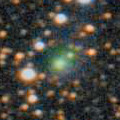
|
Now it is bright as 11.0 mag (Feb. 21, Juan Jose Gonzalez). It is expected to brighten up to 9 mag in summer. In the Southern Hemisphere, it stays observable in good condition for a long time until the comet will fade out. In the Northern Hemisphere, it is observable only until June.
Date(TT) R.A. (2000) Decl. Delta r Elong. m1 Best Time(A, h)
Mar. 10 19 20.71 0 9.6 3.171 2.808 59 12.0 4:28 (248, 27)
Mar. 17 19 25.85 -0 39.7 3.032 2.762 64 11.8 4:35 (244, 33)
|
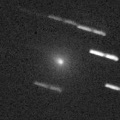
|
Now it is 10.4 mag (Feb. 17, Juan Jose Gonzalez). It will fade out after this. In the Northern Hemisphere, it stays observable for a long time in the evening sky. In the Southern Hemisphere, it will be getting higher gradually.
Date(TT) R.A. (2000) Decl. Delta r Elong. m1 Best Time(A, h)
Mar. 10 2 46.66 6 35.4 1.382 1.110 52 12.1 19:51 (112, 17)
Mar. 17 3 19.35 8 2.4 1.425 1.166 54 12.6 19:40 (115, 19)
|
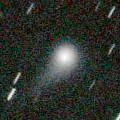
|
Now it is 12.1 mag (Feb. 17, Juan Jose Gonzalez). It stays 12 mag for a long time until spring in 2019. In the Northern Hemisphere, it stays observable in good condition while the comet will be brightening gradually. In the Southern Hemisphere, it is not observable until September.
Date(TT) R.A. (2000) Decl. Delta r Elong. m1 Best Time(A, h)
Mar. 10 12 33.10 80 19.4 2.602 2.994 103 12.2 1:28 (180,-25)
Mar. 17 10 50.04 80 9.9 2.605 2.962 101 12.2 23:03 (180,-25)
|
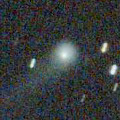
|
Now it is very bright as 12.1 mag (Feb. 16, Toshihiko Ikemura, Hirohisa Sato). It will be observable at 12-13 mag for a long time from 2017 to 2018. In the Southern Hemisphere, it will be hardly observable after this.
Date(TT) R.A. (2000) Decl. Delta r Elong. m1 Best Time(A, h)
Mar. 10 16 15.51 42 42.7 3.355 3.733 104 12.9 4:28 (187, 12)
Mar. 17 16 5.37 45 27.1 3.301 3.737 108 12.9 4:28 (180, 10)
|
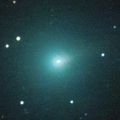
|
It brightened up to 9.2 mag from November to December (Nov. 16, Juan Jose Gonzalez). Now it is fading. But it is bright as 12.7 mag still now (Feb. 19, Thomas Lehmann). It stays observable in good condition until summer when it fades out.
Date(TT) R.A. (2000) Decl. Delta r Elong. m1 Best Time(A, h)
Mar. 10 14 31.32 3 22.2 1.028 1.848 132 13.6 3:22 (180, 52)
Mar. 17 14 28.17 3 57.0 1.025 1.894 139 13.9 2:52 (180, 51)
|

|
It is not observable now. It will appear in the morning sky in late March in the Southern Hemisphere, or in late April in the Northern Hemisphere.
Date(TT) R.A. (2000) Decl. Delta r Elong. m1 Best Time(A, h)
Mar. 10 22 26.30 -6 37.9 6.752 5.791 13 13.9 4:28 (282, -6)
Mar. 17 22 31.51 -6 2.2 6.722 5.790 19 13.9 4:35 (278, -1)
|

|
It brightened up to 7.1 mag from May to June in 2017 (June 21, Juan Jose Gonzalez). Now it is fading. It has already faded down to 12.9 mag (Jan. 17, Chris Wyatt). In the Southern Hemisphere, it stays observable for a long time after this. However, it will be extremely low from January to March. It will never be observable again in the Northern Hemisphere.
Date(TT) R.A. (2000) Decl. Delta r Elong. m1 Best Time(A, h)
Mar. 10 23 36.67 -46 33.0 4.338 3.666 42 14.3 19:51 ( 41, 12)
Mar. 17 23 49.17 -45 51.0 4.379 3.732 44 14.4 19:40 ( 41, 11)
|
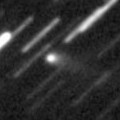
|
Now it is 13.8 mag (Feb. 10, Chris Wyatt). It will be getting lower gradually after this in the evening sky. It will be unobservable in May.
Date(TT) R.A. (2000) Decl. Delta r Elong. m1 Best Time(A, h)
Mar. 10 3 15.39 -0 44.2 2.493 2.155 58 14.4 19:51 (110, 27)
Mar. 17 3 25.82 2 32.3 2.597 2.187 55 14.5 19:40 (112, 24)
|
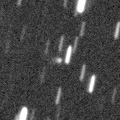
|
Now it is 15.6 mag (Feb. 18, Yuji Ohshima). It will brighten up to 9 mag in summer. However, it is hardly observable when it is bright. In the Northern Hemisphere, it is observable only until March when it brightens up to 14 mag. In the Southern Hemisphere, it is observable from July to September, but it locates in extremely low.
Date(TT) R.A. (2000) Decl. Delta r Elong. m1 Best Time(A, h)
Mar. 10 0 49.04 39 9.5 2.837 2.295 48 14.9 19:51 (122,-23)
Mar. 17 1 2.81 37 49.0 2.822 2.205 43 14.7 19:40 (121,-23)
|
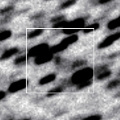
|
Now it is 17.2 mag (Jan. 14, iTelescope Observatory, Siding Spring). It will be observable at 14 mag in good condition from spring to summer.
Date(TT) R.A. (2000) Decl. Delta r Elong. m1 Best Time(A, h)
Mar. 10 19 9.37 -29 39.9 1.877 1.699 64 15.0 4:28 (279, 46)
Mar. 17 19 31.51 -28 53.2 1.811 1.678 66 14.8 4:35 (276, 48)
|
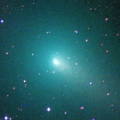
|
It brightened up to 8.1 mag in autumn (Oct. 3, Juan Jose Gonzalez). Now it is fading. It has already faded down to 16.6 mag (Feb. 13, Toshihiko Ikemura, Hirohisa Sato). In the Northern Hemisphere, it stays observable in good condition for a long time. In the Southern Hemisphere, it will never be observable again after this.
Date(TT) R.A. (2000) Decl. Delta r Elong. m1 Best Time(A, h)
Mar. 10 6 55.37 72 14.4 2.058 2.453 101 15.5 19:51 (180,-17)
Mar. 17 7 13.93 70 1.4 2.168 2.521 98 15.8 19:40 (180,-15)
|
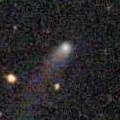
|
Now it is 15.9 mag (Feb. 12, Toshihiko Ikemura, Hirohisa Sato). It stays 16 mag for a long time from 2017 to 2018. It is observable in excellent condition in the Northern Hemisphere. It locates very low in the Southern Hemisphere.
Date(TT) R.A. (2000) Decl. Delta r Elong. m1 Best Time(A, h)
Mar. 10 7 23.70 43 14.8 4.889 5.387 115 15.6 20:12 (180, 12)
Mar. 17 7 18.15 43 36.6 5.009 5.395 107 15.7 19:40 (180, 11)
|
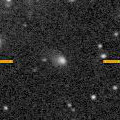
|
Now it is 16.3 mag (Feb. 18, Toshihiko Ikemura, Hirohisa Sato). It is expected to brighten up to 13-14 mag from 2018 to 2019. In the Northern Hemisphere, it stays observable in good condition for a long time. In the Southern Hemisphere, it locates extremely low until summer.
Date(TT) R.A. (2000) Decl. Delta r Elong. m1 Best Time(A, h)
Mar. 10 19 37.79 39 39.0 4.653 4.367 67 15.7 4:28 (222, -3)
Mar. 17 19 39.13 40 10.3 4.567 4.326 69 15.7 4:35 (217, 1)
|

|
Now it is 16.4 mag (Feb. 21, B. Lutkenhoner, K. Dankov). It stays 15 mag from 2018 to 2019, and it will be observable for a long time in the Southern Hemisphere. In the Northern Hemisphere, it will never be observable again.
Date(TT) R.A. (2000) Decl. Delta r Elong. m1 Best Time(A, h)
Mar. 10 14 5.56 -61 33.0 4.442 4.824 106 15.8 2:57 ( 0, 63)
Mar. 17 14 0.40 -62 55.2 4.347 4.791 110 15.7 2:24 ( 0, 62)
|

|
Now it is 15.6 mag (Feb. 26, Alexander Baransky). It will be fading slowly until summer.
Date(TT) R.A. (2000) Decl. Delta r Elong. m1 Best Time(A, h)
Mar. 10 11 44.09 11 45.9 2.557 3.540 170 15.9 0:36 (180, 43)
Mar. 17 11 39.65 12 13.3 2.558 3.541 169 15.9 0:04 (180, 43)
|
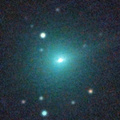
|
It brightened up to 9.7 mag in November (Nov. 16, Juan Jose Gonzalez). Now it is fading rapidly. It has already faded down to 15.5 mag (Feb. 12, Toshihiko Ikemura, Hirohisa Sato).
Date(TT) R.A. (2000) Decl. Delta r Elong. m1 Best Time(A, h)
Mar. 10 16 44.96 -12 12.5 1.425 1.841 97 15.9 4:28 (218, 63)
Mar. 17 16 49.08 -12 27.7 1.403 1.900 103 16.3 4:35 (203, 66)
|

|
Appearing in the morning sky in the Southern Hemisphere. It is observable at 15 mag in good condition in 2018. It is not observable until May in the Northern Hemisphere.
Date(TT) R.A. (2000) Decl. Delta r Elong. m1 Best Time(A, h)
Mar. 10 21 26.03 -22 1.4 3.784 2.998 32 16.0 4:28 (287, 15)
Mar. 17 21 37.11 -21 20.4 3.740 3.006 37 15.9 4:35 (283, 19)
|
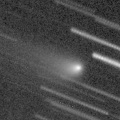
|
Appearing in the morning sky. It is fading now. But it stays 16 mag until summer.
Date(TT) R.A. (2000) Decl. Delta r Elong. m1 Best Time(A, h)
Mar. 10 19 22.95 -22 7.2 3.749 3.364 59 16.1 4:28 (271, 39)
Mar. 17 19 20.96 -22 30.8 3.660 3.405 67 16.0 4:35 (266, 47)
|
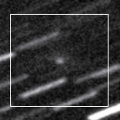
|
Now it is 17.6 mag (Feb. 18, Martin Masek). It will brighten rapidly after this, and will brighten up to 12 mag from April to June. In the Southern Hemisphere, it stays observable in excellent condition. In the Northern Hemisphere, it will be unobservable from April to June when the comet becomes brightest.
Date(TT) R.A. (2000) Decl. Delta r Elong. m1 Best Time(A, h)
Mar. 10 17 24.82 -31 51.6 1.293 1.584 86 16.6 4:28 (269, 68)
Mar. 17 17 52.47 -34 0.7 1.209 1.535 87 16.2 4:35 (274, 69)
|
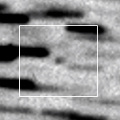
|
Now it is 17.3 mag (Feb. 23, Toshihiko Ikemura, Hirohisa Sato). It will brighten rapidly after this, and it will brighten up to 11 mag from summer to autumn. It is observable in excellent condition in the Southern Hemisphere. It locates somewhat low in the Northern Hemisphere.
Date(TT) R.A. (2000) Decl. Delta r Elong. m1 Best Time(A, h)
Mar. 10 19 26.52 -18 4.5 2.689 2.332 58 16.5 4:28 (267, 37)
Mar. 17 19 40.25 -17 50.6 2.594 2.306 62 16.2 4:35 (263, 41)
|

|
It will brighten up to 16 mag in spring. In the Southern Hemisphere, it stays observable until August, but it will be unobservable after that. In the Northern Hemisphere, it stays unobservable until June, but it will be observable in good condition after that.
Date(TT) R.A. (2000) Decl. Delta r Elong. m1 Best Time(A, h)
Mar. 10 20 20.77 -45 51.8 1.728 1.448 56 16.4 4:28 (305, 37)
Mar. 17 20 55.90 -44 1.0 1.679 1.405 56 16.3 4:35 (303, 36)
|

|
Now it is 16.2 mag (Feb. 13, Toshihiko Ikemura, Hirohisa Sato). It will be fading slowly after this.
Date(TT) R.A. (2000) Decl. Delta r Elong. m1 Best Time(A, h)
Mar. 10 10 22.77 6 54.5 8.645 9.609 165 16.5 23:10 (180, 48)
Mar. 17 10 21.36 7 14.5 8.682 9.613 158 16.5 22:41 (180, 48)
|
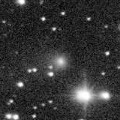
|
Now it is 16.1 mag (Feb. 18, Toshihiko Ikemura, Hirohisa Sato). It will be fading after this. In the Northern Hemisphere, it stays observable in the northern sky for a long time. It is not observable at all after this in the Southern Hemisphere.
Date(TT) R.A. (2000) Decl. Delta r Elong. m1 Best Time(A, h)
Mar. 10 21 43.18 75 10.3 3.627 3.604 80 16.5 4:28 (198,-34)
Mar. 17 21 59.51 77 16.0 3.669 3.634 80 16.6 4:35 (195,-33)
|

|
It brightened up to 15.7 mag in February (Feb. 11, Catalina Sky Survey). Now it is fading rapidly. It will be fainter than 18 mag in late April.
Date(TT) R.A. (2000) Decl. Delta r Elong. m1 Best Time(A, h)
Mar. 10 13 24.22 24 48.6 0.462 1.393 143 16.8 2:15 (180, 30)
Mar. 17 13 25.73 24 29.7 0.470 1.411 146 16.9 1:49 (180, 31)
|

|
Now it is 16.1 mag (Feb. 18, Toshihiko Ikemura, Hirohisa Sato). It will be fading gradually after this, and it will be fainter than 18 mag in autumn. In the Northern Hemisphere, it stays observable in good condition for a long time. In the Southern Hemisphere, it will never be observable again.
Date(TT) R.A. (2000) Decl. Delta r Elong. m1 Best Time(A, h)
Mar. 10 21 31.50 62 35.6 7.246 6.969 70 16.8 4:28 (212,-30)
Mar. 17 21 42.43 63 13.7 7.289 6.990 68 16.9 4:35 (210,-28)
|
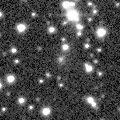
|
Now it is 16.6 mag (Feb. 13, Toshihiko Ikemura, Hirohisa Sato). It has not been brightening well since the discovery in 2010. It is observable in good conditioin in the Northern Hemisphere. It is not observable for a long time in the Southern Hemisphere.
Date(TT) R.A. (2000) Decl. Delta r Elong. m1 Best Time(A, h)
Mar. 10 5 41.03 74 40.1 8.547 8.700 95 16.9 19:51 (174,-20)
Mar. 17 5 44.41 74 16.6 8.608 8.690 91 16.9 19:40 (173,-20)
|
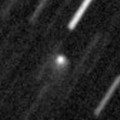
|
Now it is 16.6 mag (Feb. 26, Catalina Sky Survey). It will be fading after this, and it will be fainter than 18 mag in July.
Date(TT) R.A. (2000) Decl. Delta r Elong. m1 Best Time(A, h)
Mar. 10 12 19.76 17 1.1 4.586 5.532 160 16.9 1:11 (180, 38)
Mar. 17 12 13.28 18 30.2 4.602 5.556 161 16.9 0:37 (180, 37)
|
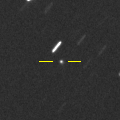
|
Now it is 17.3 mag (Feb. 13, Toshihiko Ikemura, Hirohisa Sato). It will brighten up to 15 mag in January, 2019. It stays observable in excellent condition in the Northern Hemispehre. It is observable only until June in the Southern Hemisphere.
Date(TT) R.A. (2000) Decl. Delta r Elong. m1 Best Time(A, h)
Mar. 10 12 16.21 22 21.4 3.406 4.340 157 17.0 1:08 (180, 33)
Mar. 17 12 5.87 24 22.2 3.368 4.300 156 17.0 0:30 (180, 31)
|
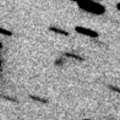
|
Now it is 17.5 mag (Jan. 27, Catalina Sky Survey). It stays observable at 17 mag in good condition for a while. It will be fainter than 18 mag in May.
Date(TT) R.A. (2000) Decl. Delta r Elong. m1 Best Time(A, h)
Mar. 10 15 22.17 -7 17.4 1.900 2.529 118 17.1 4:13 (180, 62)
Mar. 17 15 22.57 -6 54.2 1.858 2.564 125 17.2 3:46 (180, 62)
|
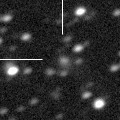
|
Now it is 16.9 mag (Feb. 13, Toshihiko Ikemura, Hirohisa Sato). It will be fainter than 18 mag in summer.
Date(TT) R.A. (2000) Decl. Delta r Elong. m1 Best Time(A, h)
Mar. 10 15 4.95 -17 17.8 5.680 6.242 120 17.2 3:56 (180, 72)
Mar. 17 15 3.78 -16 32.9 5.597 6.258 127 17.2 3:27 (180, 72)
|
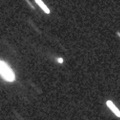
|
Now it is 16.2 mag (Feb. 25, Catalina Sky Survey). It will be fading gradually after this.
Date(TT) R.A. (2000) Decl. Delta r Elong. m1 Best Time(A, h)
Mar. 10 11 14.57 40 6.3 7.315 8.141 144 17.2 0:06 (180, 15)
Mar. 17 11 9.01 39 57.4 7.366 8.160 140 17.3 23:29 (180, 15)
|
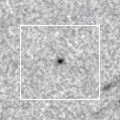
|
Now it is 17.6 mag (Feb. 21, Toshihiko Ikemura, Hirohisa Sato). It will brighten up to 17 mag and will be observable in good condition in spring.
Date(TT) R.A. (2000) Decl. Delta r Elong. m1 Best Time(A, h)
Mar. 10 13 10.08 -13 53.3 1.672 2.564 147 17.5 2:01 (180, 69)
Mar. 17 13 7.81 -13 40.8 1.622 2.557 154 17.3 1:32 (180, 69)
|
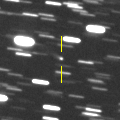
|
Now it is 17.4 mag (Feb. 12, Toshihiko Ikemura, Hirohisa Sato). It stays observable at 18 mag for a long time until 2019.
Date(TT) R.A. (2000) Decl. Delta r Elong. m1 Best Time(A, h)
Mar. 10 5 31.31 16 23.1 7.804 7.934 93 17.5 19:51 (153, 34)
Mar. 17 5 29.67 16 15.2 7.929 7.933 86 17.5 19:40 (148, 32)
|
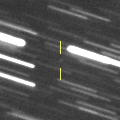
|
Now it is 19.3 mag (Feb. 21, Toshihiko Ikemura, Hirohisa Sato). It will brighten rapidly, and brighten up to 7 mag from August to September. In the Northern Hemisphere, it will be observable in excellent condition. In the Southern Hemisphere, it will be unobservable from July to August. But it will be observable in good condition before and after tha.
Date(TT) R.A. (2000) Decl. Delta r Elong. m1 Best Time(A, h)
Mar. 10 18 22.12 2 57.6 2.493 2.429 74 17.8 4:28 (234, 36)
Mar. 17 18 32.96 4 26.2 2.360 2.369 78 17.5 4:35 (227, 39)
|

|
It has passed the perihelion on Feb. 10, and it approached to the Sun down to 0.1 a.u. But it has not been observed in this apparition yet. It has been lost since the discovery in 2011. It is expected to be observable at 17 mag in good condition in March.
Date(TT) R.A. (2000) Decl. Delta r Elong. m1 Best Time(A, h)
Mar. 10 20 35.20 -31 8.1 0.196 0.872 47 21.0 4:28 (289, 28)
Mar. 17 16 49.29 -45 43.2 0.107 1.017 98 17.5 4:35 (323, 76)
|
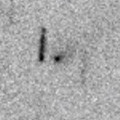
|
Now it is 17.4 mag (Feb. 13, Toshihiko Ikemura, Hirohisa Sato). It will be fading after this, and will be fainter than 18 mag in April.
Date(TT) R.A. (2000) Decl. Delta r Elong. m1 Best Time(A, h)
Mar. 10 9 27.27 -15 23.9 2.384 3.254 145 17.6 22:15 (180, 70)
Mar. 17 9 25.24 -14 59.5 2.457 3.295 141 17.7 21:45 (180, 70)
|
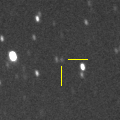
|
It stays 18 mag from 2018 to 2020. It is observable in good condition in the Southern Hemisphere. It locates extremely low in the Northern Hemisphere.
Date(TT) R.A. (2000) Decl. Delta r Elong. m1 Best Time(A, h)
Mar. 10 13 1.67 -37 30.3 3.821 4.546 131 18.0 1:53 ( 0, 87)
Mar. 17 12 57.41 -37 54.5 3.760 4.541 137 17.9 1:21 ( 0, 87)
|
|
![]()
 C/2014 B1 ( Schwartz )
C/2014 B1 ( Schwartz ) C/2016 N4 ( MASTER )
C/2016 N4 ( MASTER ) P/2017 U6 ( PanSTARRS )
P/2017 U6 ( PanSTARRS ) C/2014 OE4 ( PanSTARRS )
C/2014 OE4 ( PanSTARRS ) C/2010 U3 ( Boattini )
C/2010 U3 ( Boattini ) C/2017 D3 ( ATLAS )
C/2017 D3 ( ATLAS ) C/2018 A3 ( ATLAS )
C/2018 A3 ( ATLAS ) 30P/Reinmuth 1
30P/Reinmuth 1 C/2017 E3 ( PanSTARRS )
C/2017 E3 ( PanSTARRS ) C/2014 R3 ( PanSTARRS )
C/2014 R3 ( PanSTARRS ) 143P/Kowal-Mrkos
143P/Kowal-Mrkos C/2015 XY1 ( Lemmon )
C/2015 XY1 ( Lemmon ) 21P/Giacobini-Zinner
21P/Giacobini-Zinner 2011 KE
2011 KE C/2016 T3 ( PanSTARRS )
C/2016 T3 ( PanSTARRS ) 186P/Garradd
186P/Garradd![]()



































